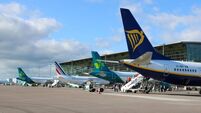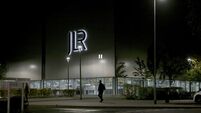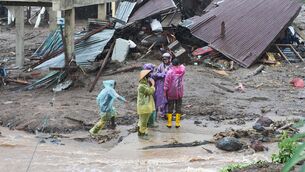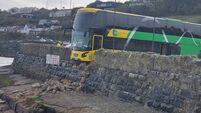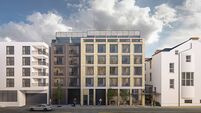Life Sciences: Bright future ahead for investment in Cork
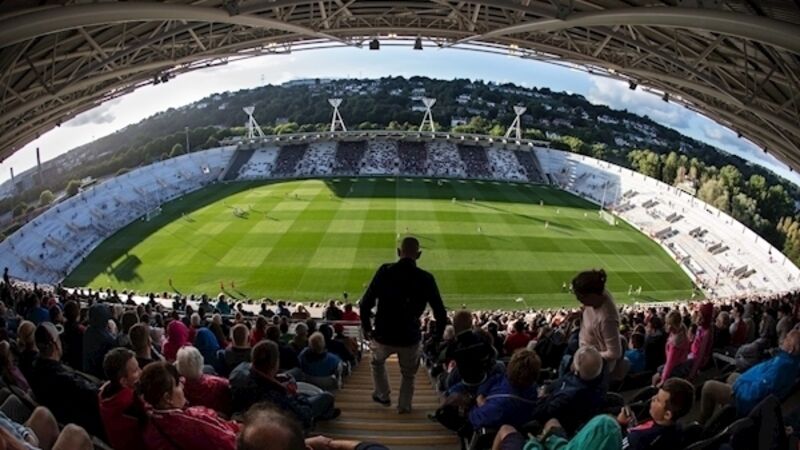
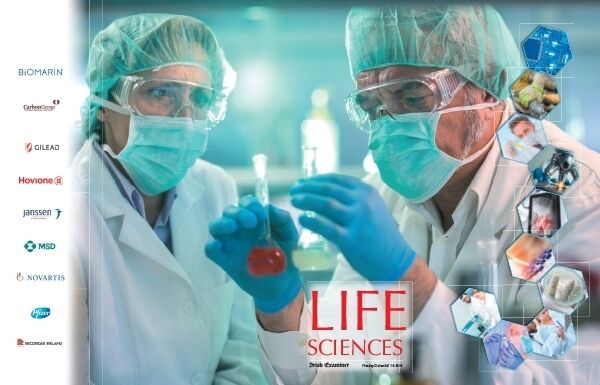
Cork's busy skyline tells the tale of a vibrant local economy.
You can almost feel it in the air as tower cranes rise above Cork’s rolling, steepled skyline, as the scaffolding comes down from soon-to-be-opened hotels, and as the Michelin stars are dished out.
Proud Corkonians, who have always felt their city is the greatest on the planet but who would also accept that it’s never quite reached its potential, are genuinely excited.
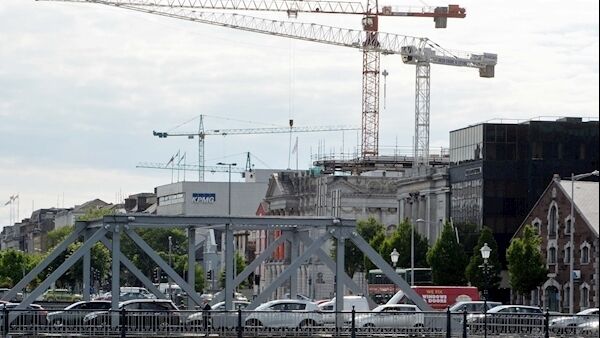
Against the backdrop of economic recovery and with investment pouring in ahead of next year’s city boundary extension — the first since 1965 — there is a real sense that the region is on the cusp of one of the most ambitious, expansive and exciting periods of growth in a generation.
And as it has been for decades, the region’s vitally important life sciences and pharma sector, the largest cluster of its kind in Ireland, will play a key role as a central driver of regional economic growth in the south of the country, and in a national context, helping to ensure the country’s economic resilience over the next 30-years.
As Ireland’s population increases by some one million people over that time, it is agreed that it can’t all be accommodated around the capital.
Cork is now viewed as the natural counterweight to development on the eastern seaboard, with next May’s city boundary extension set to create a Metropolitan region of scale, helping to fuel a predicted near-doubling of the city’s population to between 320,000 to 360,000 within the next two decades through the government’s Project Ireland 2020 strategy.
Underpinning that public policy vision for regional growth is a pledge of massive state investment in the construction of thousands of new homes, along with vital infrastructure such as roads, public transport, water, new schools and hospitals, to support it.
We’re already getting a hint of what’s to come with more than €1bn worth of private sector investment in various projects underway or in the planning pipeline in the city centre alone.
Vast new office blocks are being built on the banks of the river Lee as city centre development creeps eastwards into its sprawling docklands — a huge brownfield region described by urban planning experts as having the potential to become one of Europe’s great docklands regeneration projects.
Soaring city centre office blocks which draw their inspiration from iconic skyscrapers in New York have been granted planning, even taller ones to shadow anything seen in Ireland before are being planned on the former Port of Cork harbour commissioners site.
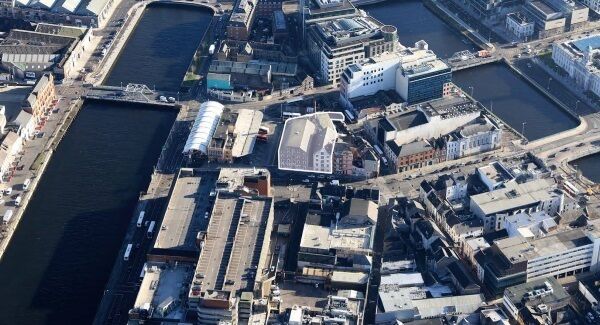
Several new hotels are being built, others are being redeveloped and expanded.
As if to punctuate the region’s ambitions, work on a landmark residential tower overlooking the estuary in the southern suburb of Mahon is set to get underway next year.
The state too has put its money where its vision is, with some €200m in public funding in the city’s public bus system pledged; the complete overhaul of one of Ireland’s busiest interchanges at Dunkettle Interchange is due to get underway next year; the Port of Cork is relocating its operations out of the city centre, unlocking prime docklands sites, and preparing for massive expansion in Ringaskiddy; and planning, pending the outcome of judicial review, is in place for the construction of the M28 motorway to Ringaksiddy — the beating heart of Ireland’s pharma and life sciences sector.
As it primes itself to cope with the unprecedented surge in the number of city centre workers, the city has introduced time-regulated bus lanes on its main street every afternoon in a bid to future-proof its public transport service.
In a city less than 30-minutes from the nearest beach, quality of life issues are getting just as much attention with the region’s tourism potential being unlocked through massive investment in the clean-up of Cork Harbour and in the development of the harbour’s Spike Island visitor attraction, dubbed Ireland’s Alcatraz; in the remediation of Haulbowline Island and the development of a new park on its eastern tip; and in the revamp and opening up of historic harbour forts like Camden and city forts like Elizabeth Fort.
We’ve seen massive state investment too in the regeneration of Pairc Ui Chaoimh, in the first instance as a sporting venue, but also as a conference and concert venue capable of hosting a triple play of Ed Sheeran concerts this year and Rod Stewart next year; with more funding planned to develop a vast public park called Marina Park wrapped around it.
It is hoped that work will start during next year on a near €80m 6,000-capacity conference and events centre in the city centre, once complex state-funding issues are resolved.
The Port of Cork has a new ferry link to Spain and Cork Airport now has a transatlantic service to the east coast of the US and has added a raft of new European routes this year.
And as if to garnish that tasty serving, the region has also picked up Ireland’s three newest Michelin stars this year — Ichigo Ichie in the city centre, Restaurant Chestnut in Ballydehob and Mews in Baltimore.
The pieces of the jigsaw required to drive the region’s expansion and growth are slowly beginning to fall into place.
But above all, it’s the people and what they offer that make the region what it is.
Conde Nast Traveller voted Cork one of the world’s friendliest cities this year, referencing the historic English Market and the Shandon Bells, as must sees, and recommending that people visit its many independent coffee shops and restaurants, and citing its “picturesque riverfront location, its cosy pubs and beergardens where you can enjoy the great outdoors while sharing a table with friendly locals” as among the elements which contribute to its charm.
It is clear that cities and regions have become the new battleground for skills, investment and enterprise, and in the context of Brexit, it has never been more important for smart regions to unite and tell their story to the world.
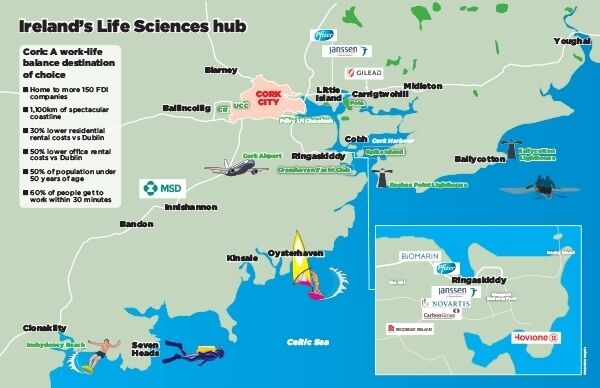
‘We are Cork’ website
The city and county councils, Cork Airport, Port of Cork, University College Cork, Cork Institute of Technology, Cork Chamber, Cork Business Association, IBEC, Enterprise Ireland, IDA Ireland, Fáilte Ireland and Visit Cork have united to develop the “We are Cork” brand as part of a two-pronged initiative to develop a Cork placebrand to market the city and county nationally and internationally as a place to study in, invest in, live in, do business in and visit.
It includes a website and a celebration of all the positive and unique things happening in Cork – highlighted through videos and images telling the success stories of the people who live, work, study and have invested in the region.
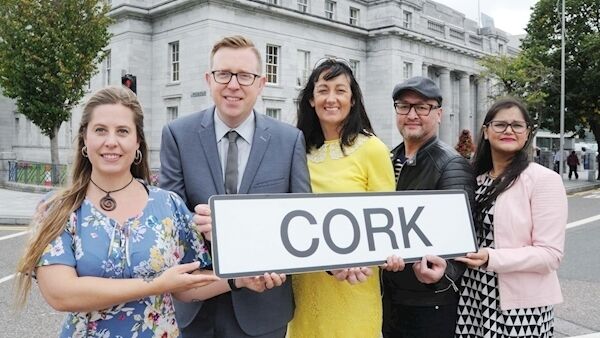
It is a one stop website for people thinking about investing, moving to or studying here.
Despite some initial controversy over the cost and logo, all involved insist that the power and impact of the brand in the long-term will be greatly enhanced by the involvement of all the key stakeholders speaking with a unified voice and projecting a shared message about the region.
Those in the boardrooms across the globe are getting the message, with a projected investment of a staggering €1.4bn planned in the region’s life-sciences and pharma sector over the next three or four years alone — that’s more than half what was invested in the region over the last two-decades.
Will Brady, at UCC’s Centre for Planning Education and Research put it best when the city boundary extension was being finalised late last year.
“Cork’s success and prosperity is clearly aligned with the State’s basic economic interests, and it is clear that Ireland needs Cork more than ever to drive the regional development agenda for the southern part of the country,” he said.
“Equally, Cork needs explicit public policy supports to complement its credentials as Ireland’s key opportunity for effective regional development. Put simply, Ireland needs Cork to work.”
It’s working.






